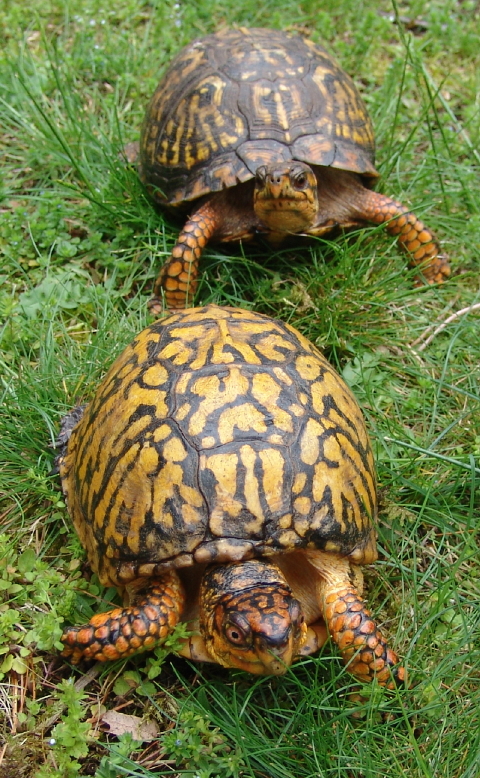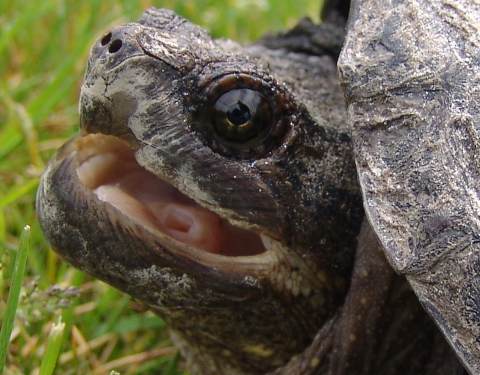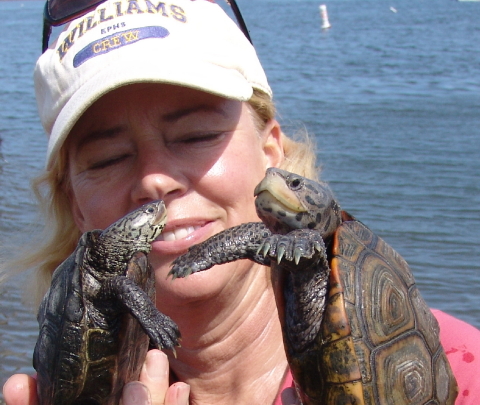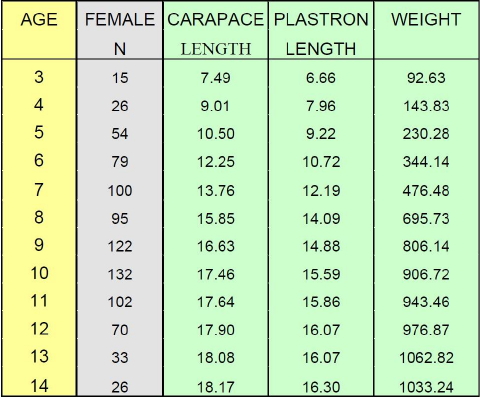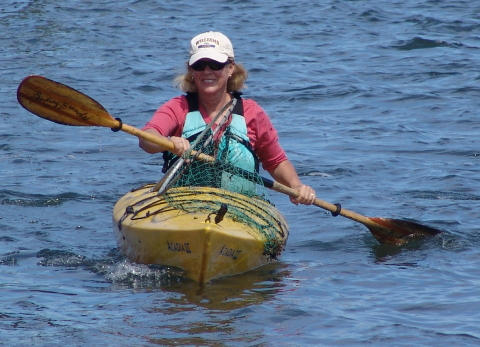Eastern Box Turtle Couple (Female Rear, Male Front)
Rains drenched the SouthCoast of Massachusetts. Wonderful, springtime rains that soak woodlands and refresh wetlands. Days like these mark the moment when Eastern box turtles emerge from burrows and replenish loss hydration incurred during nearly seven months of slumber. And this last winter and spring have witnessed considerable dryness and drought in Eastern Massachusetts.
Sue Wieber Nourse Re-Discovers Rescued New Bedford Turtle
With that in mind, the Turtle Journal team visited Great Neck Sanctuary in Wareham this morning. Sue Wieber Nourse quickly found a gorgeous female box turtle crossing the path and luxuriating in a muddy puddle bath. As luck would have it, we discovered this turtle was the one that had been rescued from the busy streets of New Bedford last summer. We had placed her here in the Great Neck Sanctuary on October 3rd, hoping she would acclimate to the new habitat, survive the winter, and adopt Great Neck as her new home. (See Homeless “Street Turtle” Finds a Sanctuary.)
Male Eastern Box Turtle
Clearly, she has been doing quite fine.  We weighed her at 675 grams when we released her in the fall. Today she tipped the scales at 681 grams after seven months of brumation. And just a few feet down the path, we found this handsome dude hanging around … obviously waiting for our attractive lady. So, she has already found a beau in her new neighborhood.
Adorable Box Turtle Couple @ Great Neck Sanctuary
The male box turtle felt light compared to the female. He weighed just 493 grams even though he measured only a little more than a 1/2 centimeter shorter in shell length. Like most males, he sports bright red, “boodshot” eyes, while our attractive lady has the beautiful, tradional female brown eyes.
Sue Wieber Nourse with Adorable Box Turtle Couple
The adorable couple was brought back to Turtle Journal headquarters to be examined, weighed, measured and photographed. Because this female is such an important specimen, we wanted to be sure that we identified her correctly and we compared her photographic and data records.Â
Eastern Box Turtle Couple
We were delighted to confirm our field observations. Eastern Box #2 is indeed the mature female turtle that was rescued from the busy streets of urban New Bedford, and brought to Great Neck Sanctuary at the onset of brumation time in October to try to reset her sense of territoriality when she emerged this spring. All signs point to at least initial success.
Adorable Couple Released Back in Great Neck Sanctuary
After processing at headquarters, the two Eastern box turtles were immediately returned to the spot where they were discovered within the Great Neck Sanctuary. Turtle Journal, in partnership with Mass Audubon’s Allens Pond Wildlife Sanctuary, will continue to monitor this sanctuary for box turtle activity to determine the population density in this area of Wareham and to check on Eastern Box Turtle #2, our rescued female.
